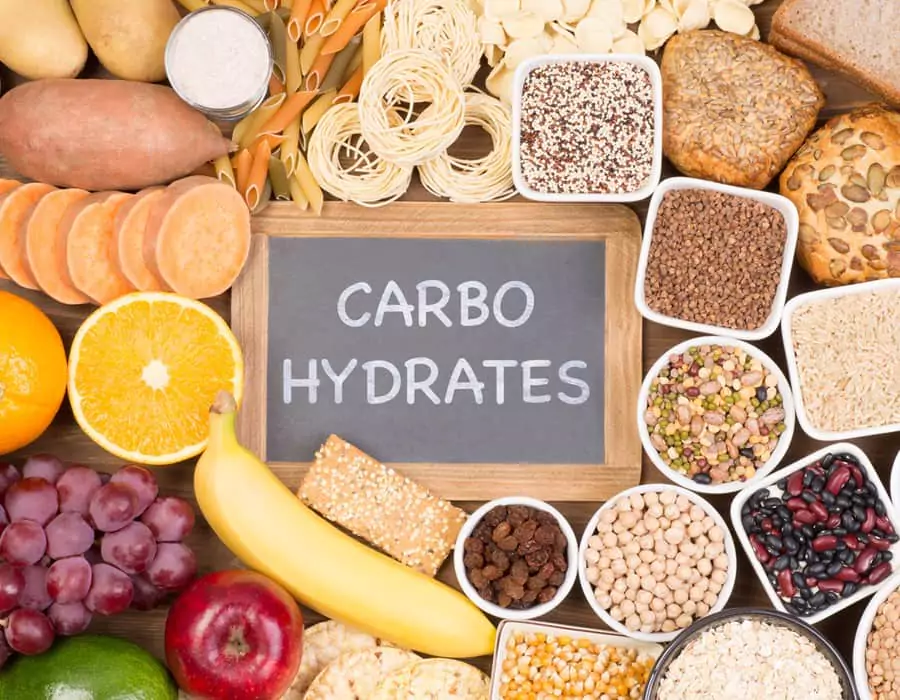





What is the best diabetic diet?


Table of Contents
- What is the best diabetic diet?
- Medical nutrition therapy
- What about a low-carbohydrate diet? Some people think low low-carbohydrate diet is the best diet for diabetes. Is that true?
- Is a low-fat diet the best diet for diabetes? How much fat should be in the best diabetic diet?
- Is it ideal or the best diabetic diet to contain no carbs? Distribution and Amount of Calories in the best diabetic diet
- How many calories are needed in the best diabetic diet?
- What is the calorie distribution in the best diabetic diet?
- How much fat should be in the best diabetic diet?
- But, I only had a salad…
- What does the best diet for diabetes look like?
- About the author
The Mediterranean diet is the best diabetic diet! Yes, it was proven in studies to improve glycemic control. The Mediterranean diet was compared with other diets such as low fat, nonrestricted calorie, low carbohydrate, high carbohydrate, and usual diet. In one of those studies, patients who were on the Mediterranean diet were much less likely to use medications compared to patients on other diets.
44% of patients on the Mediterranean diet for diabetes took medications versus 77% of patients on other diets. At the end of the study, there was no difference in terms of weight change by 3 to 4 years. Want to know more about the best diabetic diet? Keep reading. Today we will talk about the best diets for diabetes or the best diabetic diet!
Yes, this is the most important aspect of diabetes management, type 1 or type 2. Most people will ask me what should I eat, what diet is the best for diabetes, etc. It is so surprising to hear that people really have no or very little idea about carbohydrates or general diets. It is a huge topic and it is definitely not simple. I always advise to my diabetic patients to eat in moderation.
Is that enough? Arent there a "the best diabetic diet"? It is true that portion size control is one of the most important elements. If you wish to learn about our online on-demand diabetes doctors and our telehealth diabetes care center, contact us after you finish reading the article and remember to share with other people who may benefit from the information. And yes there is a proven diet best for diabetes. Tune in. We will dive into some detail in this article.
What is the best diabetic diet?
Mediterranean diet appears to be the best diet for diabetes
The Mediterranean diet was proven in studies to improve glycemic control. The Mediterranean diet was compared with other diets such as low fat, nonrestricted calorie, low carbohydrate, high carbohydrate, and usual diet.
In one of those studies, patients who were on the Mediterranean diet were much less likely to use medications compared to patients on other diets. 44% of patients on the Mediterranean diet took medications versus 77% of patients on other diets. At the end of the study, there was no difference in terms of weight change by 3 to 4 years.
Patients who were on a Mediterranean diet also showed improvement in their cholesterol levels. Another reason we think the Mediterranean diet is the best diet for diabetes is that the Mediterranean diet reduces the risk of heart attacks and strokes. As you may know, two-thirds of diabetics die from heart attacks and strokes.
Being on a diet is easier said than done of course. It takes a motivated patient and sometimes the help of certain medications and diabetes coaches to help achieve the final goal.
Medical nutrition therapy
Medical nutrition therapy consists of
- Weight loss and physical activity
- Determining a caloric intake goal
- A consistent amount of carbohydrates per meal and snack
- The nutritional content of the diet
- Setting appropriate timing for meals and snacks
We will go over These goals in the following sections
What about a low-carbohydrate diet? Some people think low low-carbohydrate diet is the best diet for diabetes. Is that true?
Only in the short term. Studies showed that low carbohydrate diets can improve weight, cholesterol, and diabetes only in the short term. In the long term, these low-carb diets were not maintainable by most people.
Is a low-fat diet the best diet for diabetes? How much fat should be in the best diabetic diet?
Studies indicate that 85% of patients with diabetes eat more than recommended fat in their diet. The increased amount of fat causes insulin resistance and reduces the effect of insulin. High fat also increases blood sugar, increase his weight, and cholesterol levels.
The type of fat consumed is also extremely important in order to prevent heart attacks and strokes. Trans fat (hydrogenated fats) causes blockage of arteries. Mono- and polyunsaturated fats (particularly omega-3 fatty acids) protect the arteries from clots.
Current evidence shows that replacing saturated fat with polyunsaturated fat reduces blood sugar and insulin resistance. Also, replacing carbohydrates, saturated fat, or monounsaturated fat with polyunsaturated fat improves insulin secretion capacity.
So it is not just a low-carb or low-fat diet. It is about good fat and a good carb diet. Also, in terms of the best diabetic diet, it is very important to keep the total calories consumed daily on the low side no matter what the content of the diet is.
Is it ideal or the best diabetic diet to contain no carbs? Distribution and Amount of Calories in the best diabetic diet
Another important factor to consider for the best diet while treating diabetes is the total calories consumed daily. Everybody has a different metabolism, as a result, caloric intake should be estimated, and ideally tested.
In a rough estimate you can determine your caloric intake as below;
How many calories are needed in the best diabetic diet?
Although there is no one formula that fits all the following guidelines may help determine your caloric goals
- Men and active women: 15 kcal/lb minus 500 kcal
- Most women, sedentary men, and adults over 55 years: 13 kcal/lb minus 500 kcal
- Sedentary women and obese adults: 10 kcal/lb minus 500 kcal
- Pregnant or Breast-feeding women: 15 to 17 kcal/lb minus 500 kc
What is the calorie distribution in the best diabetic diet?
Patients should carry a log which can easily be done via phone applications today. This helps keep track of total daily calories. The distribution of calories is also very important. A reasonable distribution of calories would be 40% of calories taken with breakfast, 30% with lunch, and another 30% with dinner. Although difficult yet not impossible some patients can skip dinner. Skipping dinner creates an intermittent fasting period. Skipping dinner if possible can be more successful at staying within their glucose control.
You should always tell your physician about your portion sizes and the number of calories you consume per meal.
Consistency is another key factor especially for those taking mealtime insulin. If the calories and carbohydrates taken do not match the insulin injected, glucose control will be almost impossible.
For example, if the patient eats 60g of carbohydrates with breakfast and takes 10 units of mealtime insulin today versus the same patient eats 30g of carbohydrates tomorrow for breakfast and still takes 10 units of mealtime insulin. It is a no-brainer that if blood sugars stayed stable on the first day with 60g of carbohydrates, the same patient will develop low blood sugars for eating only 30g of carbohydrates.
Let us move on to the fat content of the diet.
How much fat should be in the best diabetic diet?
Those patients who rely on low-carbohydrate and high-fat diets should understand that fat consumption can drastically increase insulin resistance. Also, 1g of fat contains 9 calories versus 1g of carbohydrate contains only 4 calories. As a result, most patients end up gaining weight. Because, they are on a low carbohydrate diet, high-fat diet. So low-carb and high-fat diet is not always the best diabetic diet.
As an example, a patient who eats a slice of bread versus another patient who eats a slice of bread with butter will see totally different blood sugar numbers. In reality, the carbohydrate amount is the same in both foods. Remember, your body will need to make 30% more insulin for the same carbohydrate that is mixed with fat. That is because the fat causes insulin resistance in the patient’s body.
But, I only had a salad…
Occasionally, my patients will complain that they have only had a salad with chicken today and his or her blood sugar still went up. When asked they will accept that they had chicken wings instead of chicken breast. Chicken wing clearly contains a significant amount of animal fat creating insulin resistance. As a result, even a small amount of carbs in the salad will cause blood sugar elevation due to the fat content of the chicken wings.
Dressing on the salads can also contain a significant amount of sugar and fat. Most patients ignore this fact and get frustrated for not being able to lose weight or control their blood sugars.
It is not uncommon for patients to be unhappy about not being able to lose weight or control their diabetes. They think that they are eating a lot of vegetables and fruits. A lot of “fluid” fruits such as watermelon, honeydew, and grapes are high in carbohydrates with a low glycemic index. On the other hand apples, blackberries, blueberries, strawberries, raspberries, and pears have a low glycemic index. So the best diabetic diet includes carbs that are healthy and low in glycemic index.
What does the best diet for diabetes look like?
In summary, an ideal diet, or the best diet for diabetes is composed of 50% of healthy low glycemic index carbohydrates, 30% of healthy proteins, and 20% of healthy fat. The best diet for diabetes is also a diet low in calorie intake.
The only scientifically proven diet that reduces the risk of heart attack and stroke along with blood sugars and cholesterol is the Mediterranean diet. Portion and calorie control, awareness of glycemic index as well as consistency are the major components of best diabetic diets that lead to success for diabetes control as well as weight management.
At www.sugarmds.com you will always have a diabetes coach on your side and a diabetes specialist to consult for all your diabetes-related questions and concerns which will lead to a reduction in medication costs and a healthier, happier life.
Thank you for allowing us to help in your diabetes education. Please feel free to contact us directly for any questions or concerns.
About the author
Author: Ahmet Ergin, MD, FACE, CDCES, ECNU Dr. Ergin operates a large diabetes practice mostly in West Palm Beach, FL, and yet can see diabetic patients across the entire state of Florida via a unique telehealth platform which also allows him and his team to track patient progress and be available at all times.
Written By Dr. Ahmet Ergin
461 total articles
Meet Dr. Ahmet Ergin, a highly skilled and dedicated endocrinologist with a passion for diabetes care. Dr. Ergin earned his medical degree with honors from Marmara University in Istanbul. He completed internal medicine residency and endocrinology fellowship at Cleveland Clinic. Dr. Ergin is board-certified in Internal Medicine, Endocrinology, Diabetes, and Metabolism due to his vast medical expertise. He's a certified diabetes educator, author of “The Ultimate Diabetes Book,” and founder of “the SugarMD YouTube channel.” Dr. Ergin offers exceptional diabetes care to his patients in Port Saint Lucie, FL, helping them manage effectively. For a closer look into his insights and experiences, connect with Dr. Ahmet Ergin on LinkedIn, Instagram, and YouTube.”
Disclaimer: These statements have not been evaluated by the Food and Drug Administration. Information on this website isn't intended to treat, cure or prevent any disease. Discuss with your doctor and do not self-treat.
Products













